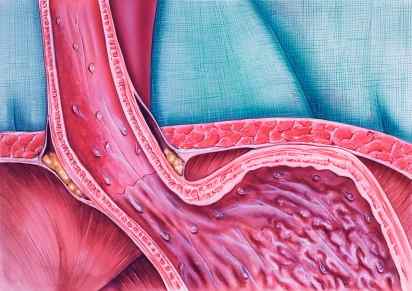Barrett’s esophagus is a change in your cells lining your esophagus (food tube) it’s more common in people with acid reflux (gerd), but can develop without having gerd management ranges from monitoring your esophageal lining with endoscopies to treatments to remove damaged tissue. Gastroesophageal reflux disease and barrett's esophagus. Gastroesophageal reflux disease (gerd), also known as acid reflux, is a long-term condition in which stomach contents rise up into the esophagus, resulting in either symptoms or complications symptoms include the taste of acid in the back of the mouth, heartburn, bad breath, chest pain, regurgitation, breathing problems, and wearing away of the teeth.
gastroesophageal reflux disease and barrett's esophagus
Gastroesophageal reflux disease (gerd) is the result of a disordered valve mechanism between the esophagus (swallowing tube) and the stomach the valve, or lower esophageal sphincter (les), opens during swallowing to allow food to enter the stomach and then closes to prevent food and stomach secretions from moving backward into the esophagus. The barrett's esophagus center at baylor medicine in houston, texas, offers the latest screening and therapeutic techniques for managing gerd and barrett's esophagus. led by drs. mohamed othman, sharmila anandasabapathy nabil mansour, reena v. chokshi, and hashem el-serag, our expert team of specialists use advanced endoscopic technology. These include gastroesophageal reflux disease (gerd), eosinophilic esophagitis and barrett’s esophagus. gastroesophageal reflux disease . the most recent practice guidelines for diagnosis and management of gastroesophageal reflux disease support establishing a presumptive diagnosis of gerd without endoscopic.






